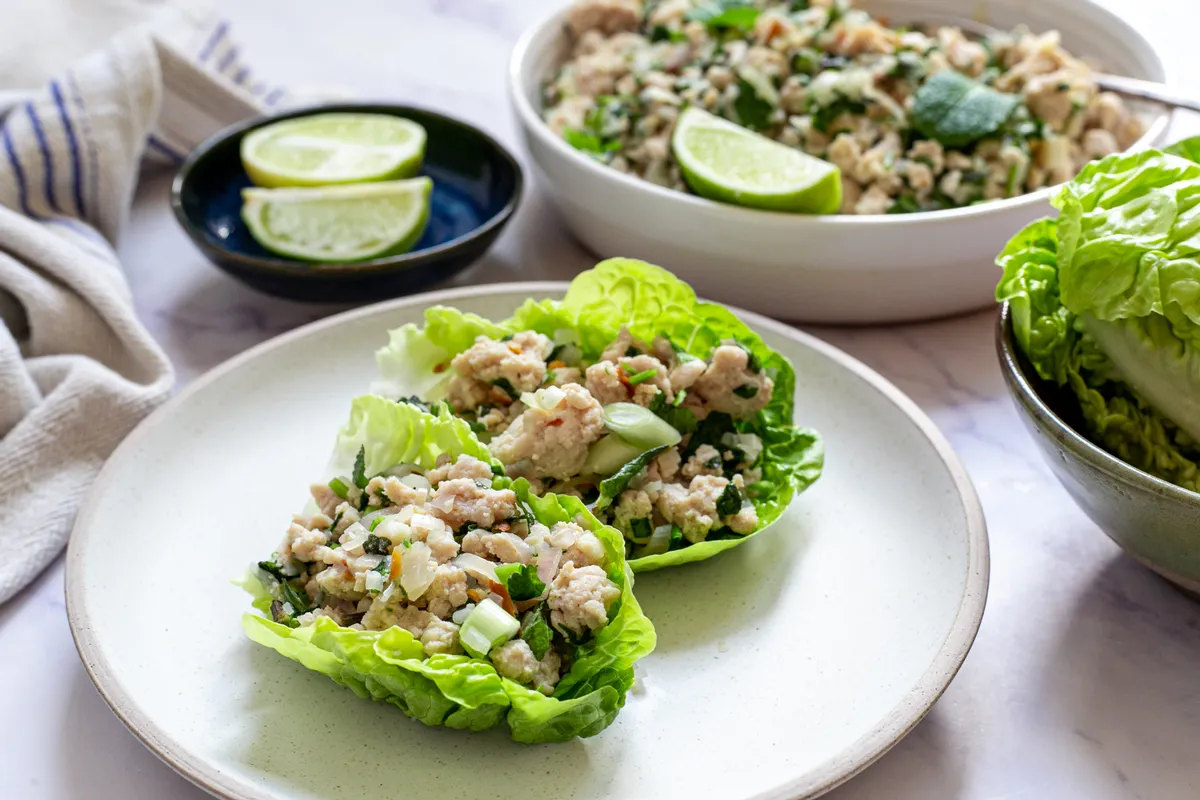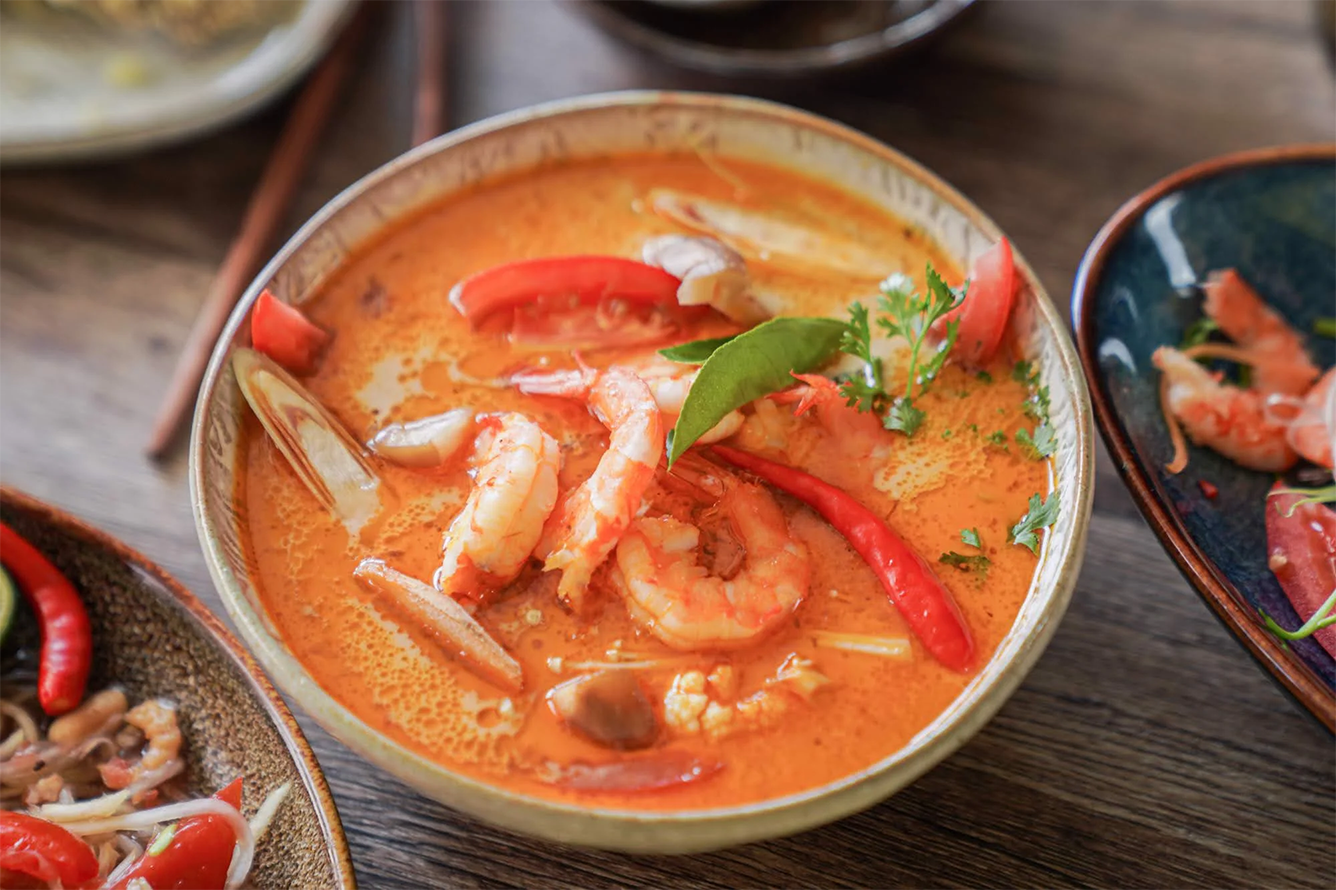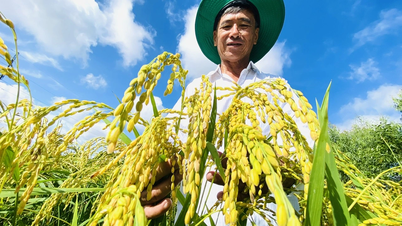One of the interesting things when going on a tour of Laos, Cambodia, Thailand is to explore the local markets. At these markets, you will enjoy countless delicious street foods such as:
1. Lao Cuisine - A journey to discover the fresh and rich flavors of the mountains and forests
Larb is a particularly famous dish in Laos. (Photo: Collected)
When traveling to Laos, Cambodia, and Thailand, you cannot miss the famous dishes of Laos. With fresh ingredients and natural spices, Lao cuisine brings a very special experience.
Larb - Minced Meat Salad
Larb is a very typical dish of Laos, usually made from minced meat (chicken, pork, beef) and mixed with fresh spices such as lemon, mint leaves, coriander, fresh chili and a little fish sauce to increase the richness. Larb is often eaten with sticky rice, creating a blend of sour, spicy and salty flavors. This dish is not only delicious but also shows the healthy lifestyle of Lao people when using fresh ingredients and natural spices. This is an indispensable dish on the tour of Laos, Cambodia and Thailand.
Khao Niew - Lao Sticky Rice
Sticky rice is the staple food of the Lao people, present in almost every meal. This dish has a special flavor and is often served with grilled meat, hot pot or stir-fried dishes. Sticky rice is soft, sticky, cooked with steam and has a natural aroma. When combined with other dishes, Khao Niew becomes a simple yet flavorful dish, the perfect choice for the meals of the people here.
Tam Maak Hoong - Lao Papaya Salad
Papaya salad is a rustic but very popular dish in Laos. With the main ingredient being green papaya, this dish is often mixed with chili, garlic, fish sauce and lemon, creating a sour, spicy, salty and extremely refreshing flavor. Usually eaten with sticky rice, Lao papaya salad brings a refreshing and cooling feeling, very suitable for hot days.
2. Cambodian Cuisine - The Sweet and Mysterious Taste of Traditional Dishes
Amok is the most typical dish of Cambodia. (Photo: Collected)
Cambodian cuisine is a delicate blend of Indian, Chinese and local influences, creating a cuisine that is both traditional and modern. Cambodian dishes are characterized by their sweet, fresh flavors from natural ingredients and distinctive spices.
Amok - Steamed Fish
Amok is one of the most famous and typical dishes of Cambodia, which is a combination of fresh fish, boned, chopped and mixed with coconut milk, eggs, fish sauce, palm sugar, chili... to form a smooth mixture. Then, this mixture is steamed in banana leaves to preserve the flavor and freshness of the ingredients. When the dish is completed, the fish is very soft, with a special aroma from the banana leaves and coconut milk, combined with the sweetness of the fish and delicate spices.
Amok is usually served with rice and is an indispensable dish during festivals or important meals of Cambodian people. This dish has a strong local flavor and shows creativity in using fresh ingredients.
And in addition to fish, Cambodians sometimes innovate this traditional dish with other ingredients such as chicken, beef, pork, tofu... to create a unique flavor that attracts more and more diners.
Bai Sach Chrouk – Grilled Pork with Rice
Bai Sach Chrouk is a popular and beloved breakfast dish in Cambodia. This dish consists of white rice served with fragrant, tender grilled pork, marinated with garlic, spices and grilled over charcoal until golden brown. In particular, this dish is also served with a little pickle and raw vegetables, creating a perfect balance of salty, sweet and sour flavors. This dish is not only delicious but also imbued with Cambodian culture and tradition.
Num Banh Chok - Cambodian Noodle Soup
Num Banh Chok is a very popular breakfast dish in Cambodia. The noodles are made from rice flour and are often served with fish broth, combined with fresh herbs such as coriander, bean sprouts, cucumber and other spices. This dish has a refreshing and easy-to-eat taste, very suitable for those who want to enjoy a light but nutritious breakfast.
3. Thai Cuisine – An Exciting Adventure of Spicy Dishes
Tom Yum is a dish known as "the quintessential delicacy of Thai cuisine". (Photo: Collected)
Thailand is famous for its dishes with characteristic spicy, sweet and sour flavors. Thai dishes are not only delicious but also have a harmonious combination of strong spices, creating extremely interesting culinary experiences.
Pad Thai - Thai fried noodles
Pad Thai is a national dish of Thailand, very popular and loved everywhere. Rice noodles are stir-fried with shrimp, tofu, eggs and bean sprouts, combined with typical Thai spices such as fish sauce, palm sugar and tamarind, creating a very special sweet and spicy flavor. This dish is often garnished with crushed peanuts, fresh lime and chili powder, which enhances the flavor and makes the dish more attractive.
Tom Yum - Hot and sour soup
Tom Yum is a famous Thai soup, with a sour, spicy, and aromatic flavor from lemongrass, lime leaves, chili, and ginger. This is an indispensable dish in Thai meals, usually made from shrimp, mushrooms, and typical spices. Tom Yum can be eaten with white rice or other dishes, bringing a special flavor that makes everyone love it from the first time they try it.
Som Tum - Thai Papaya Salad
Som Tum is a typical Thai papaya salad, usually made with green papaya, chili, garlic, peanuts and fish sauce. This dish has the perfect combination of the spicy taste of chili, the salty taste of fish sauce, and the sweet taste of papaya, creating a rich flavor that stimulates the taste buds. Som Tum is a very popular dish and is loved in family meals or outdoor parties in Thailand.
At the end of the tour of Laos, Cambodia and Thailand , you will not only bring back wonderful memories from the mysterious landscapes but also experience the unique culinary flavors, imbued with the identity of each country. Let the dishes in this journey to discover the three Indochinese countries awaken all your senses and make you always remember an unforgettable trip.
Source: https://www.vietravel.com/vn/am-thuc-kham-pha/di-tour-du-lich-lao-campuchia-thai-lan-an-gi-ngon-v16856.aspx






![[Update] - Thunderstorms cause many houses to have their roofs blown off and offices damaged](https://vphoto.vietnam.vn/thumb/1200x675/vietnam/resource/IMAGE/2025/7/20/bd58d40a73fc4ee3a418cd32e656dbad)
![[Photo] National Assembly Chairman Tran Thanh Man visits Vietnamese Heroic Mother Ta Thi Tran](https://vphoto.vietnam.vn/thumb/1200x675/vietnam/resource/IMAGE/2025/7/20/765c0bd057dd44ad83ab89fe0255b783)






























































































Comment (0)